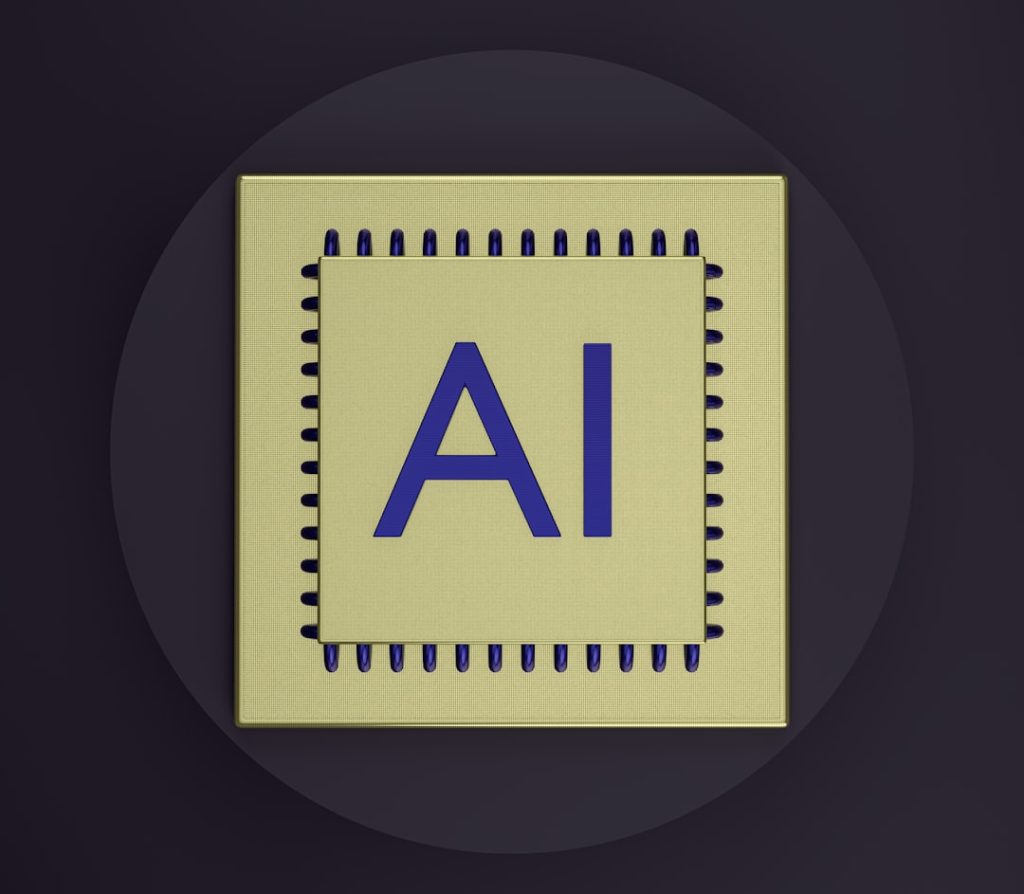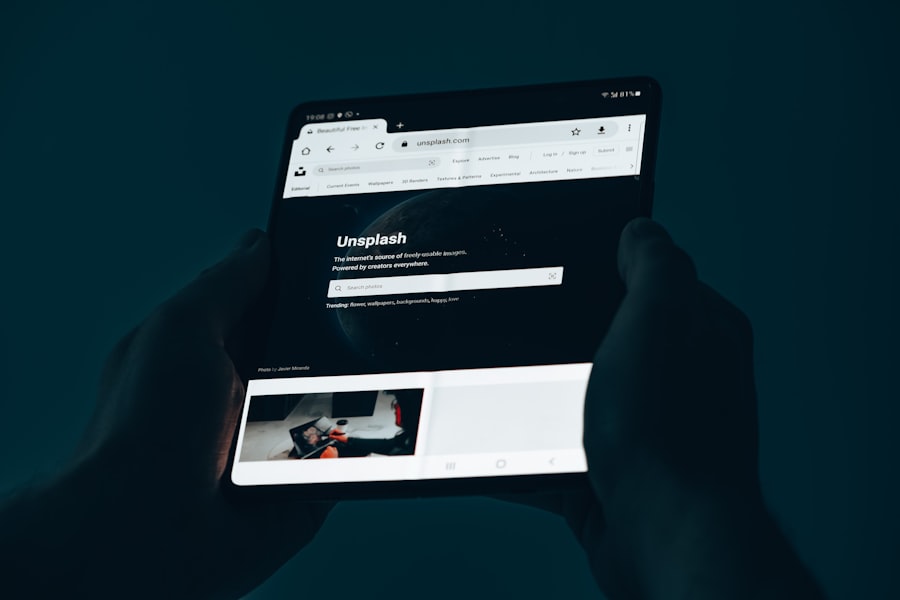Artificial Intelligence (AI) has emerged as a transformative force in various industries, and web design is no exception. The integration of AI technologies into web design processes has revolutionized how websites are created, maintained, and optimized. By leveraging algorithms and data-driven insights, designers can create more engaging, user-friendly, and efficient websites.
This shift not only enhances the aesthetic appeal of websites but also improves functionality and user interaction. As businesses increasingly recognize the importance of a strong online presence, the role of AI in web design continues to grow, offering innovative solutions that cater to the evolving needs of users. The advent of AI in web design has led to the development of tools that automate repetitive tasks, analyze user behavior, and generate personalized content.
These advancements allow designers to focus on creativity and strategy rather than getting bogged down by mundane tasks. For instance, AI can assist in generating layouts based on user preferences or analyzing vast amounts of data to determine the most effective design elements. As a result, web design is becoming more data-driven, enabling designers to make informed decisions that enhance user engagement and satisfaction.
Key Takeaways
- AI is revolutionizing web design by automating processes and personalizing content to enhance user experience.
- Machine learning plays a crucial role in web design by analyzing user data and behavior to make informed design decisions.
- AI has a significant impact on user experience by predicting user preferences, improving website performance, and enhancing interactivity.
- AI can personalize website content by analyzing user data, behavior, and preferences to deliver tailored experiences.
- Web design processes can be automated with AI, saving time and resources while improving efficiency and accuracy.
The Role of Machine Learning in Web Design
Machine learning, a subset of AI, plays a pivotal role in enhancing web design by enabling systems to learn from data and improve over time without explicit programming. This capability allows designers to create websites that adapt to user behavior and preferences dynamically. For example, machine learning algorithms can analyze user interactions on a website to identify patterns and trends.
By understanding how users navigate through a site, designers can make informed adjustments to improve usability and engagement. One practical application of machine learning in web design is predictive analytics. By examining historical data, machine learning models can forecast future user behavior, allowing designers to anticipate user needs and preferences.
This predictive capability can inform decisions about layout changes, content placement, and even color schemes. For instance, if data shows that users are more likely to engage with certain types of content at specific times of day, designers can optimize the website’s content delivery accordingly. This level of personalization not only enhances user experience but also increases conversion rates.
Understanding the Impact of AI on User Experience
The impact of AI on user experience (UX) in web design is profound and multifaceted. AI technologies enable designers to create more intuitive interfaces that respond to user needs in real-time. For instance, chatbots powered by AI can provide instant customer support, guiding users through their queries without the need for human intervention.
This immediate assistance enhances user satisfaction and reduces frustration, leading to a more positive overall experience. Moreover, AI can analyze user feedback and behavior to identify pain points within a website. By employing sentiment analysis tools, designers can gauge user emotions based on their interactions with the site.
This data-driven approach allows for targeted improvements that address specific issues users may encounter. For example, if users frequently abandon their shopping carts at a particular stage in the checkout process, designers can investigate the underlying causes and implement changes to streamline that experience. Ultimately, AI empowers designers to create websites that are not only visually appealing but also highly functional and user-centric.
How AI Can Personalize Website Content
Personalization is one of the most significant advantages that AI brings to web design. By analyzing user data such as browsing history, preferences, and demographic information, AI can tailor website content to meet individual user needs. This level of customization enhances engagement and encourages users to spend more time on a site.
For instance, e-commerce platforms can use AI algorithms to recommend products based on a user’s previous purchases or browsing behavior, creating a more relevant shopping experience. Additionally, AI-driven personalization extends beyond product recommendations. Websites can dynamically adjust their content based on real-time data inputs.
For example, news websites can present articles that align with a user’s interests or geographical location. If a user frequently reads articles about technology trends, the site can prioritize similar content in their feed. This not only keeps users engaged but also fosters a sense of connection between the user and the website, ultimately driving loyalty and repeat visits.
Automating Web Design Processes with AI
The automation of web design processes through AI is reshaping how designers approach their work. Tasks that once required significant manual effort can now be streamlined using AI-powered tools. For instance, design software equipped with AI capabilities can automatically generate layouts based on predefined parameters or user preferences.
This automation not only saves time but also reduces the likelihood of human error during the design process. Furthermore, AI can assist in optimizing images and other media for web use. Tools that leverage machine learning can analyze images for quality and size, automatically adjusting them for optimal loading times without sacrificing visual fidelity.
This capability is particularly crucial in an era where website speed is paramount for user retention and SEO rankings. By automating these processes, designers can focus on higher-level creative tasks while ensuring that technical aspects are handled efficiently.
Enhancing Website Performance with AI
Continuous Monitoring for Actionable Insights
By continuously monitoring these metrics, AI systems can provide actionable insights that help designers make informed decisions about performance enhancements. One specific application of AI in performance optimization is predictive caching.
Predictive Caching for Faster Load Times
By analyzing user behavior patterns, AI can predict which content is likely to be accessed next and pre-load it into the cache. This proactive approach significantly reduces loading times for users, leading to a smoother browsing experience.
Optimizing Server Resources for Peak Performance
Additionally, AI can help optimize server resources by dynamically allocating bandwidth based on real-time traffic patterns, ensuring that websites remain responsive even during peak usage times.
The Future of Web Design with AI
As technology continues to evolve, the future of web design will undoubtedly be shaped by advancements in AI. Emerging technologies such as natural language processing (NLP) and computer vision are set to further enhance how designers create and interact with websites. For instance, NLP could enable more sophisticated chatbots that understand context and nuance in user queries, providing even more accurate responses.
Moreover, as AI becomes more integrated into web design tools, we may see a shift towards collaborative design processes where human creativity is augmented by machine intelligence. Designers will likely work alongside AI systems that suggest design elements or layouts based on current trends and user preferences. This collaboration could lead to innovative designs that push the boundaries of traditional web aesthetics while maintaining functionality.
Overcoming Challenges in Implementing AI in Web Design
Despite the numerous benefits of integrating AI into web design, several challenges must be addressed for successful implementation. One significant hurdle is the need for high-quality data to train AI models effectively. Inaccurate or biased data can lead to flawed algorithms that produce suboptimal results.
Therefore, organizations must invest time and resources into data collection and management practices that ensure accuracy and relevance. Another challenge lies in the potential resistance from designers who may fear that AI could replace their roles or diminish their creative input. It is essential for organizations to foster a culture that emphasizes collaboration between human designers and AI systems rather than viewing them as competitors.
By highlighting the complementary nature of these technologies—where AI handles repetitive tasks while humans focus on creativity—organizations can alleviate concerns and encourage adoption.
Examples of Successful AI-Driven Websites
Several websites have successfully integrated AI technologies into their design processes, showcasing the potential benefits of this approach. One notable example is Netflix, which employs sophisticated algorithms to analyze viewer preferences and behavior patterns. The platform uses this data to recommend shows and movies tailored to individual users’ tastes, significantly enhancing user engagement and satisfaction.
Another example is Shopify’s use of AI-driven tools for e-commerce businesses. The platform offers features like product recommendations based on browsing history and automated inventory management systems that predict stock needs based on sales trends. These tools empower online retailers to optimize their operations while providing personalized shopping experiences for customers.
The Ethical Considerations of AI in Web Design
As with any technology, the integration of AI into web design raises ethical considerations that must be addressed thoughtfully. One primary concern is data privacy; as websites collect vast amounts of user data for personalization purposes, it is crucial to ensure that this information is handled responsibly and transparently. Users should be informed about how their data is being used and have control over their privacy settings.
Additionally, there is the risk of algorithmic bias in AI systems that could lead to discriminatory practices or reinforce existing stereotypes. Designers must be vigilant in ensuring that their algorithms are trained on diverse datasets that reflect a wide range of perspectives and experiences. By prioritizing ethical considerations in the development and implementation of AI technologies, designers can create inclusive web experiences that respect user rights.
Tips for Integrating AI into Your Web Design Process
Integrating AI into your web design process requires careful planning and execution to maximize its benefits while minimizing potential pitfalls. One effective strategy is to start small by implementing specific AI tools that address particular challenges within your workflow. For instance, consider using an AI-powered analytics tool to gain insights into user behavior before exploring more complex applications like chatbots or automated design generation.
Collaboration between designers and data scientists is also essential for successful integration. Designers should work closely with data professionals to ensure that the algorithms being used align with creative goals while maintaining accuracy and relevance in data analysis. Regular training sessions on emerging AI technologies can help keep your team informed about best practices and innovative solutions.
Furthermore, continuously monitor the performance of your AI tools and gather feedback from users to refine your approach over time. By adopting an iterative mindset—where you assess results regularly and make adjustments as needed—you can ensure that your integration of AI remains effective and aligned with evolving user needs. In conclusion, the integration of artificial intelligence into web design represents a significant evolution in how websites are created and experienced by users.
From enhancing personalization to automating processes and improving performance metrics, AI offers numerous advantages that can lead to more engaging and efficient online experiences. As technology continues to advance, embracing these innovations will be crucial for staying competitive in an increasingly digital landscape.
Artificial intelligence is revolutionizing the field of web design, as seen in the article “Hello World: How AI is Transforming Web Design”. This article explores how AI technologies are being used to create more personalized and user-friendly websites, leading to improved user experiences and increased engagement. With AI algorithms analyzing user behavior and preferences, websites can now dynamically adjust content and design elements to better cater to individual visitors. This innovative approach to web design is paving the way for a more intuitive and efficient online experience for users.
FAQs
What is artificial intelligence (AI) in web design?
Artificial intelligence in web design refers to the use of AI technologies, such as machine learning and natural language processing, to automate and improve the design process of websites. AI can analyze user behavior, generate personalized content, and optimize user experience.
How does AI impact web design?
AI impacts web design by automating repetitive tasks, personalizing user experiences, and improving website performance. AI can analyze data to make informed design decisions, create dynamic content, and enhance user engagement.
What are the benefits of using AI in web design?
The benefits of using AI in web design include improved user experience, increased efficiency, personalized content delivery, and better website performance. AI can also help designers make data-driven decisions and adapt to changing user preferences.
What are some AI tools for web design?
Some AI tools for web design include Grid, Wix ADI, Firedrop, and Adobe Sensei. These tools use AI to automate design processes, generate layouts, and personalize content based on user behavior.
Is AI replacing human web designers?
AI is not replacing human web designers, but rather augmenting their capabilities. While AI can automate certain tasks and improve efficiency, human designers are still needed for creative decision-making, strategic planning, and understanding user needs.


